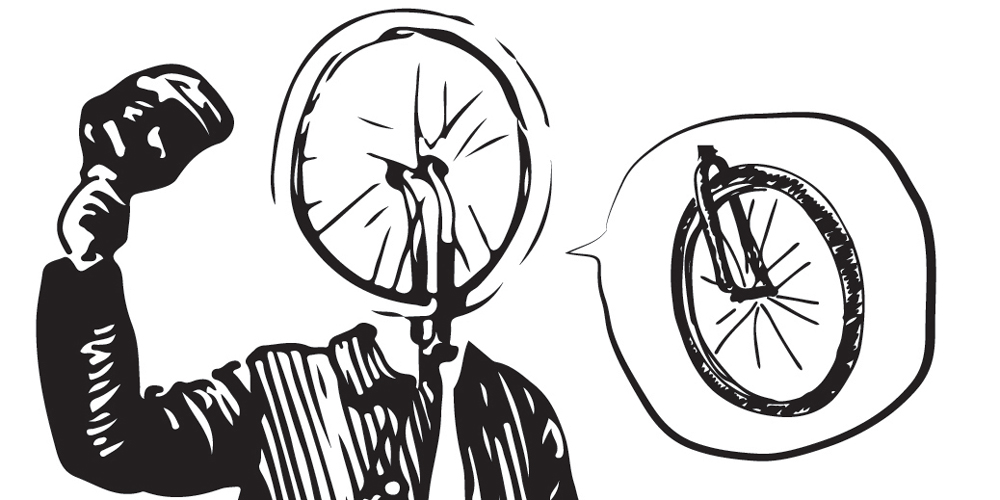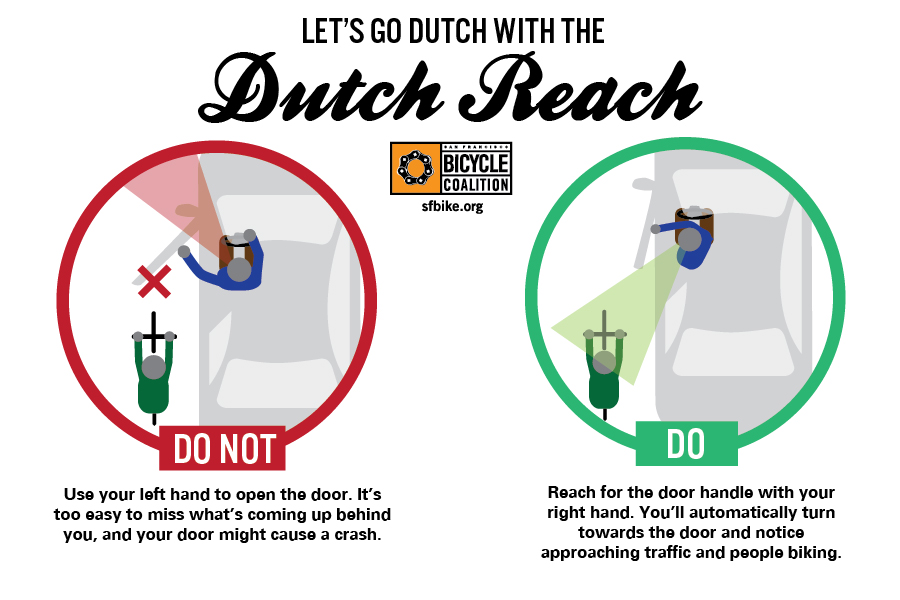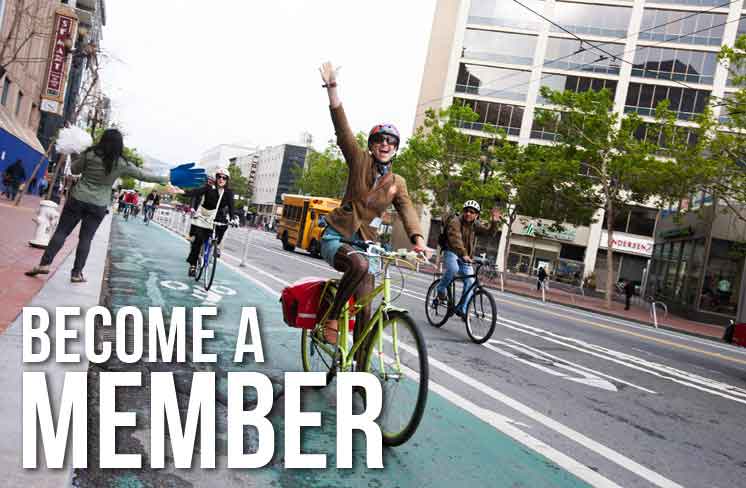Wheel Talk for Wheel People is a monthly advice column written by Christopher White, our adult education program coordinator. Though bikes, biking and getting around SF is our area of expertise, feel free to ask anything! To submit your questions, please click here.
Wheel Talk, while biking I saw another biker holding a cell phone to his ear while in motion. I felt like I should say something, so at a light, feeling a bit like an ass, I reminded him that biking with a cell phone is illegal. He told me, witheringly, that it’s totally fine. Who’s right? —Donkey on Wheels
Dear Donkey on Wheels: When I’m teaching both people who bike and people who drive, I generally stick to the same mantra: same rights, same responsibilities. In the eyes of the law, it’s mostly true that operators of cars or bikes are viewed the same. But in this case, your blithe lane-mate has it right: according to our friends at CalBike, people on bikes are not legally banned from using cell phones.
Where the law may turn a blind eye, however, common sense does not. And common sense tells us that, when using your hands to balance and brake, doing something totally unrelated with them isn’t particularly clever. The National Safety Council tells us that even talking on the phone hands-free while operating a vehicle (and I’ll include the bike in that category) doesn’t mitigate for safety, because we still experience “inattention blindness.”
So please, blithe lane-mate (which might be my new drag name), let that phone call wait until you dismount. Stop with the texting. Look up your destination BEFORE you start pedaling. And if you need directions, keep your phone in a handlebar mount and, preferably, wear a single earphone to let the nice Google lady tell you where to go.
Wheel Talk, are bicyclists subject to the same requirements as motorists for signaling their maneuvers, as laid out in the California Vehicle Code? For example, if I’m braking, does the law require me to signal it? —Clueless in the Asphalt Jungle
Dear Clueless in the Asphalt Jungle: Imagine you’re speeding down the green-painted bike lane on Page Street, towards Octavia. It’s a steep downhill with a red stoplight at the end. The brake lights of the cars to your right are all illuminated. Shouldn’t you similarly be communicating to the folks behind you that you’re stopping? The problem is, of course, that your “brake light” is your palm — which needs to be squeezing your hand brake if you’re not going to fly through the light
This is another case where the rules governing people in cars and people on bikes are a bit different. When operating a car, you must communicate your plans with brake lights and turn indicators. In the saddle, using your hands to do so is recommended for your own safety: when others know what you’re going to do, they can react appropriately. But if keeping both hands on the handlebars or your brakes will actually keep you safer, that should take priority. And the law agrees, with signals recommended but not required. Remember, you can signal your intentions in other ways, such as lane positioning or a quick glance over your shoulder.
Wheel Talk, thanks for addressing questions of driving safely around people on bikes and bike infrastructure. I’ve been wondering, how do I parallel park when there’s a bike lane between traffic lanes and the parking spot? —Weekend Rider
Dear Weekend Rider: My pleasure! For our education program to help make SF a safer, more pleasurable place to bike, I believe that we must train all road users.
The California Vehicle Code says that people in cars can and should pull into the bike lane in order to initiate parallel parking. But it’s the driver’s responsibility to do so safely. Before pulling into the bike lane, you should turn on your right turn indicator, check your right mirror and also check over your right shoulder for any people biking. If any are coming, let them pass — they have the right of way. Only when it’s safe and nobody is coming down the bike lane, pull into the bike lane. Park with alacrity, in case somebody else comes down the lane.
And once you’re parked, check the bike lane again before opening your door to avoid hitting anyone! We recommend the “Dutch Reach” for opening car doors: get in the habit of using your hand FARTHEST from the door handle so that you must turn towards the street in order to open the door, and therefore see oncoming bikes and cars.



